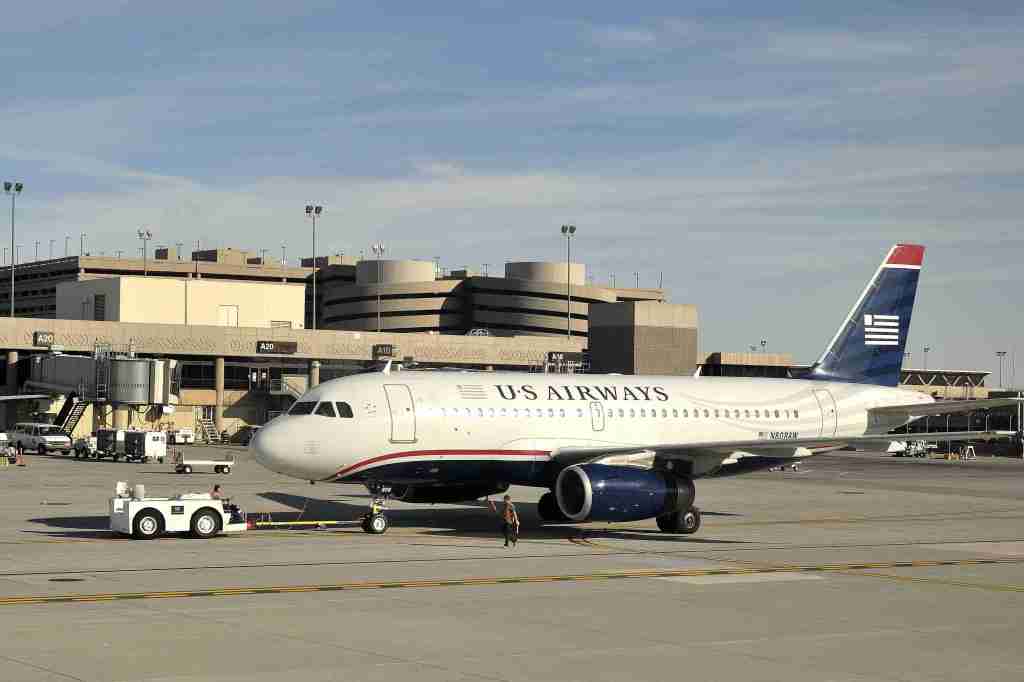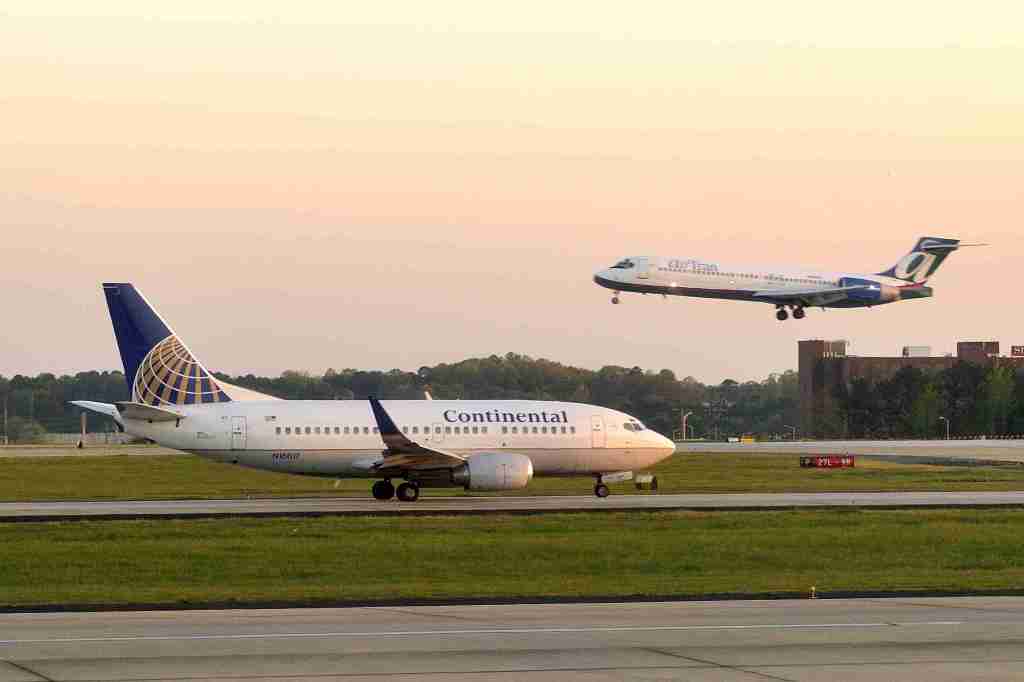Why Are Frequent Flier Benefits Disappearing?
Gary had a recent post where he said that reduced competition was not the reason for reduced frequent flier benefits. Rather, tight capacity with full flights is the culprit. I certainly agree with Gary that Delta (DL) and United (UA) have reduced benefits – throw in Southwest and JetBlue if you like – and I agree there is still lots of competition. Nevertheless, in my opinion, cutting the legacies in half has done more to reduce benefits than altering capacity.
He also mentioned Alaska (AS) and American (AA) specifically as a couple airlines that haven’t answered the siren call of tying redeemable miles to airfare  instead of distance, much less gutting their frequent flier programs overall. However, I believe these two are victims of competition and their positions have nothing to do with full flights.
instead of distance, much less gutting their frequent flier programs overall. However, I believe these two are victims of competition and their positions have nothing to do with full flights.
Alaska, based in Seattle (SEA), is a most unusual airline. They are a partner with both Delta and American (as well as others) but not a member of either alliance. AS pretty much owned Sea-Tac until Delta made a decision to substantially add many more flights up there. Indeed, Delta wants to nearly triple their number of SEA slots. Suddenly there is… dare I use this word… competition. I mean real competition. Delta added a flurry of flights from SEA – international as well as western U.S. destinations – along with a targeted double redeemable and status miles promotion.
Delta even offered top tier Diamond status to someone flying as little as 30,000 miles if they earned high fare bonuses and maxed out a Delta Reserve AmEx card with the first year signup bonus. Thanks to this poaching, AS had to offer the next best thing. Competition does this, which is also why United has trimmed service and closed their flight attendant base there, leaving AS and DL to slug it out. My point here, it is this competition that has Alaska bending their marketing rules, not tight capacity.
American also is a bit unique. They were the last to gag down a bankruptcy and their merger is not complete. I applaud the way they came up with a scheme to attract and keep their very best passengers who pay to fly in business/first class. But they had to do this for… competitive reasons, not capacity. Anything less and they would have risked losing their most valuable passengers to the improvements offered by DL and UA, two airlines that clearly measure value in dollars, not miles.
I agree with Gary that with only three legacies, it is much easier to control capacity. Where we disagree is that this can happen so easily only because there are two competitors instead of five. Delta and United didn’t slash their frequent flier benefits and arguably their award availability/redemptions because of tight capacity. They did it because there is no competition that says they can’t. They never would have even attempted this with four other challengers.
If we still had six legacies,  there would likely be tighter capacity as well, but nevertheless excess beyond what we see today. True, some routes probably would have been cut but some of them would be picked up by other carriers trying to secure markets at certain destinations. I believe it would have been business as usual for the six, meaning the majors would have done just as they have in the past – bankruptcy, redundant routes with overcapacity in certain markets, periodic airfare wars, marketing promos, and eventually bankruptcy again. Oh, and lower airfares, too. In other words, a competitive environment where the carriers have to work really hard to build their airline profit statements, something they can do today with their eyes closed because there are fewer of them. Moreover, the airlines would not be the darlings of Wall Street without reduced competition, no matter how tight they tried to control capacity.
there would likely be tighter capacity as well, but nevertheless excess beyond what we see today. True, some routes probably would have been cut but some of them would be picked up by other carriers trying to secure markets at certain destinations. I believe it would have been business as usual for the six, meaning the majors would have done just as they have in the past – bankruptcy, redundant routes with overcapacity in certain markets, periodic airfare wars, marketing promos, and eventually bankruptcy again. Oh, and lower airfares, too. In other words, a competitive environment where the carriers have to work really hard to build their airline profit statements, something they can do today with their eyes closed because there are fewer of them. Moreover, the airlines would not be the darlings of Wall Street without reduced competition, no matter how tight they tried to control capacity.
Capacity is also not the reason for airline improvements. Without reduced competition, there is no way Delta, for example – the first through bankruptcy/merger – would have invested so much to insure every 2-cabin flight has Wi-Fi, much less given us all-aisle access with lie-flat seats on their international aircraft as well as some domestic. They also would not have spent so much to modernize their SkyClubs, including their award-winning SkyDecks. I even doubt they would have improved their in-flight or lounge food fare. And you could forget about all the new aircraft on order. Some, yes, but nowhere near the backlog we see today.
But also keep this in mind. Gary’s right, the airlines have a great handle on capacity control now and there is no way they will give it up. When their business turns south, they are in a much better position to pull flights to keep capacity tight. However, again where we differ is I believe the three remaining legacies can do this only because they aren’t looking over their shoulders at five others.

Interesting article. I think, looking forward, the big question is what does the DOJ do with the next proposed merger. if Jetblue or Alaska became targets would the DOJ prohibit the merger or allow further consolidation?
A point of comparison is that the DOJ stopped AT&T from buying T-mobile and in the process set off the current mobile phone price war that has benefits huge numbers of American consumers. It is, of course, not a perfect analogy since the mobile phone companies had been making huge profits for decades while the airlines have been, as you note, struggling to make a profit/going bankrupt for decades.
I enjoy merger speculation as much as anyone, Dan, but keep in mind that any future mergers will likely come from a new Administration with a different DOJ. Oh, and JetBlue may not be a target. They just might be the acquirer instead. 🙂
What role foreign carriers? Much of the discussion has been around capacity control within the US, yet the foreign carriers are making big inroads on the international market. We have the Middle east airlines coming in, Turks at most hubs and the Asian carriers battering at the west. With the world globalizing the future is not squabbling over the local market but making a mediocre product attractive to long haul flyers.
“a bit unique”
Sort of like being half pregnant, no? One is either unique/pregnant or not.
Tight capacity is the result of oligopoly behavior by the the three surviving legacy carriers. Tight capacity (and reduction in ff benefits) is the inexorable and imminently predictable result of the oligopoly created by airline mergers. In short, few competitors equal less competition.